
Bakersfield Field Office
|
|
ISSUE 898- April 16, 2020
|
|
|
- Headlines & Highlights
- Wildland Fire & Fuels Management
- BLM Armchair Adventures
- BLM & DOI Highlights
- Wildlife Question of the Week
- Upcoming Events

BLM launches new electronic system to help accelerate development of broadband infrastructure across the west
The BLM launched a new electronic filing system that will streamline applications for communications use rights-of-way on public lands. The system, called eSF-299, will facilitate development of broadband infrastructure to underserved rural communities across the West. (BLM news release)
|

BLM offering salvage timber sale in Butte County
The Bureau of Land Management is offering for sale approximately 1.8 million board feet of merchantable saw timber in the Camp Fire Salvage Sale in Butte County. (BLM news release)
|
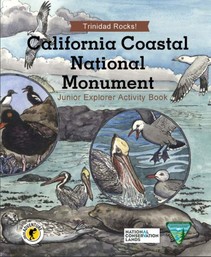
California Educational Resource webpage is now live
Are you looking for something to do with children while stuck indoors? Check out the California Educational Resource webpage to download activities for all ages. Take a virtual nature walk, explore a National Monument with our Junior Ranger series, or find whole lesson plans for your at-home classes. All this and more now available online. (BLM CA Facebook)
|

BLM Redding partners with community to restore Trinity River
The Trinity River is an iconic National Wild and Scenic River in northern California. Known for its historically prolific salmon and steelhead populations, the Trinity provides sustenance, spirituality, recreation and education for local tribes and surrounding communities. (BLM CA blog)
|

Panoche and Tumey Hills seasonal closures
The BLM Central Coast Field Office will close Panoche and Tumey Hills in Fresno County to vehicle access from April 15 to October 15, as part of our routine seasonal closures. For more information please visit Central Coast Field Office webpage. (BLM CA Facebook)
|
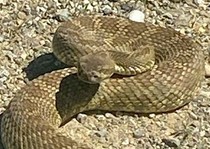
On a trail at Fort Ord National Monument
As California eases into Spring, remember that social distancing on remote trails might mean giving more than 6’ of space to some of nature’s visitors. A BLM Ranger snapped this photo today at Fort Ord National Monument while on patrol. (BLM CA Facebook)
|
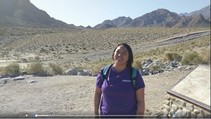
Walking with a Geologist on the Cove to Lake Trail
Do you know what gives our mountains their colors? Learn about the dark colorings of deep time, the prehistoric Lake Leconte and some of the amazing geological wonders of the desert on the Cove to Lake trail with our intern Yasuko. (Friends of the Desert Mountains Facebook)
|
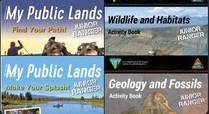
Junior Ranger booklets available online
Home with your kids during #Covid19? Interested in remote learning ideas? BLM’s Junior Ranger books help your kids connect with the natural world and cultural resources: https://on.doi.gov/3ahHT1m. Many of the booklets are available in English and Spanish! #SlowTheSpread. (BLM Twitter)
|
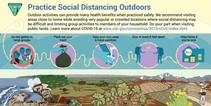
Practice social distancing outdoors
Outdoor activities can provide many health benefits when practiced safely. We recommend visiting areas close to home while avoiding very popular or crowded locations where social distancing may be difficult and limiting group activities to members of your household. Do your part when visiting public lands. (BLM CA Website)
|

Wildfire is changing. So are we
The nature of wildfire and the risks associated with it have changed dramatically in the last few decades. In most areas the window in which wildfires traditionally occur has grown from five to seven months of the year. Taking regional differences into account—California, Florida, and Montana burn at different times of the year—we no longer have "fire seasons" in the United States, we have "fire years." (DOI Wildland Fire)
|
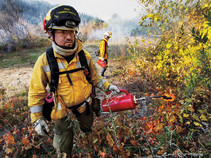
Taming the Flames
Anna Colegrove-Powell is setting the woods on fire. Her drip torch streams diesel onto dry leaves and twigs, and its flaring tip sets them ablaze. Soon, a line of orange flame sweeps through the underbrush along the thickly forested Klamath River, igniting small bushes and singeing the trunks of oaks and firs. The sight would horrify many Californians. Over the past three years, wildfires have devastated the state, killing or injuring hundreds of people, incinerating thousands of homes, forcing evacuations, and spewing smoke into cities. (Alta)
|

Be ready for wildfire
Unfortunately, wildfires will not wait and warm weather is around the corner. If you can, invest time in working on your #HomeHardening projects. Blocking any spaces between your roof covering and sheathing prevents dangerous embers from entering your home! (CAL Fire Facebook)
|

Wildland fire outlook
Check out the latest #WildlandFireOutlook! Available here. (NIFC Facebook)
|
|
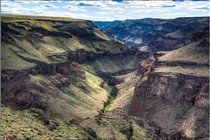
Owyhee Uplands
The gently sloping sage-covered Owyhee Uplands are located in a very remote region two hours south of Boise, Idaho. They have a geologic history that was much more violent than their sublime appearance suggests. The uplands hide a number of dramatic canyons, including this deeply eroded cleft formed by Jacks Creek. These canyons provide a window into layers of rock that are evidence of the area’s ancient volcanic activity. (BLM Instagram)
|
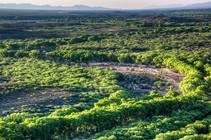
San Pedro River
The San Pedro River in Southern Arizona is truly a desert oasis. In springtime, the explosion of lime green leaves on the cottonwoods and willows makes it a bit more challenging to spot some of the 250 bird species that winter or migrate along the river corridor. (BLM Instagram)
|
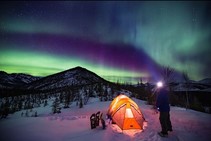
White Mountains
Alaska’s White Mountains, located north of Fairbanks, are ground zero for some of the best Aurora Borealis viewing on earth. Descriptions of the aurora, or the northern lights, go as far back as written history. Early theories included sunlight reflected by ice crystals in the air, the glow of glacier ice, or a light emanating from the edge of Earth. (BLM Instagram)
|
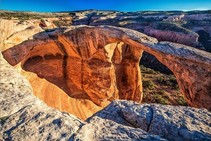
McInnis Canyons National Conservation Area
Rattlesnake Arch with its 40-foot span stretching above a 120-foot high window is the namesake of this collection of 35 natural arches in the backcountry of McInnis Canyons National Conservation Area, just outside of Grand Junction, Colorado. (BLM Instagram)
|

San Juan Islands
Turn Point, located on the tip of Stewart Island, is the westernmost location in Washington’s San Juan Islands. The shipping channel between the San Juan’s and Canada’s Southern Gulf Islands makes a 90 degree turn around the western tip of the island leading to its name. (BLM Instagram)
|

Killpecker Sand Dunes
Boars Tusk stands in dramatic isolation from surrounding mountains at the western edge of the Killpecker Sand Dunes. Heavily eroded, it is all that remains of a long extinct volcano. (BLM Instagram)
|
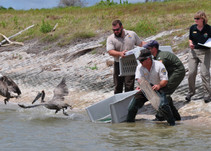
Ten Year Observance of the Deepwater Horizon Tragedy
From the immediate aftermath of the disaster to today, Interior remains committed to restoring the Gulf of Mexico. (DOI news release)
Related: Deepwater Horizon Ten-Year Observation (DOI video)
|
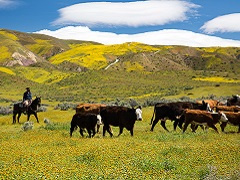
BLM statement on continuation of grazing activities during COVID-19 Pandemic
Grazing on BLM-managed public lands is an important part of the Nation’s food supply and will continue in 2020 as we respond to the COVID-19 pandemic. (BLM news release)
|
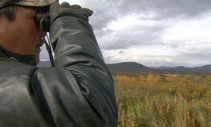
This Week at Interior April 10, 2020
Secretary Bernhardt announces an historic proposal for new and expanded hunting and fishing opportunities across more than 2.3 million acres nationwide; Interior’s public lands agencies are seeking public comment on the use of electric bicycles, also known as e-bikes. (DOI video)
|
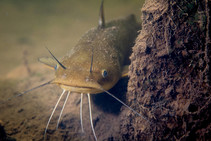
Multiple choice
The light in the refrigerator can be a lifesaver when finding a midnight snack. Despite often living in dark or muddy water, the yellow bullhead catfish needs no light to catch it's pray using ....
a) Its sharp inner ears to pick up subtle vibrations
b) Infrared cells in its eyes to detect temperature deference underwater
c) Using thousands of taste buds all over its body to taste its food from afar
Keep scrolling to find the answer.
|

BLM seeks comments on 2020 off-highway vehicle recreation proposals
Deadline May 4, 2020
The Bureau of Land Management is seeking public comments on the California State Parks, Off-Highway Motor Vehicle Recreation Division, off-highway vehicle recreation proposals, which are available for review from March 3 to May 4 (BLM news release)
|
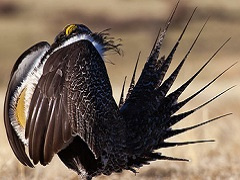
BLM extends comment period on greater sage-grouse analysis
Deadline May 21, 2020
The Bureau of Land Management has extended the public comment period on six draft supplemental environmental impact statements for the resource management plans that guide management of greater sage-grouse habitat on public lands in seven Western states. (BLM news release)
|
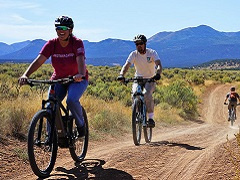
BLM seeks public comment on proposed e-bike regulations
Deadline June 9, 2020
The Bureau of Land Management today announced a 60-day public comment period on proposed electric bike, or e-bike, regulations, intended to make it easier for more Americans to recreate on and experience their public lands. (BLM news release)
|
|
Wildlife Question of the Week Answer
The answer is (c). Yellow bullhead (Ameiurus natalis) use taste buds to help it find food. Taste buds are found in the mouth and all over the body. They have 5 taste buds every 5 mm² of their body surface. The "whiskers" serve as both an external tongue and hands. Bullheads can feel with their body and their barbels. They also have 20,000 taste buds on the eight whiskers. The average adult has a total of over 200,000 taste buds on its body.
Source: Biokids.com, USFWS Tweet
|